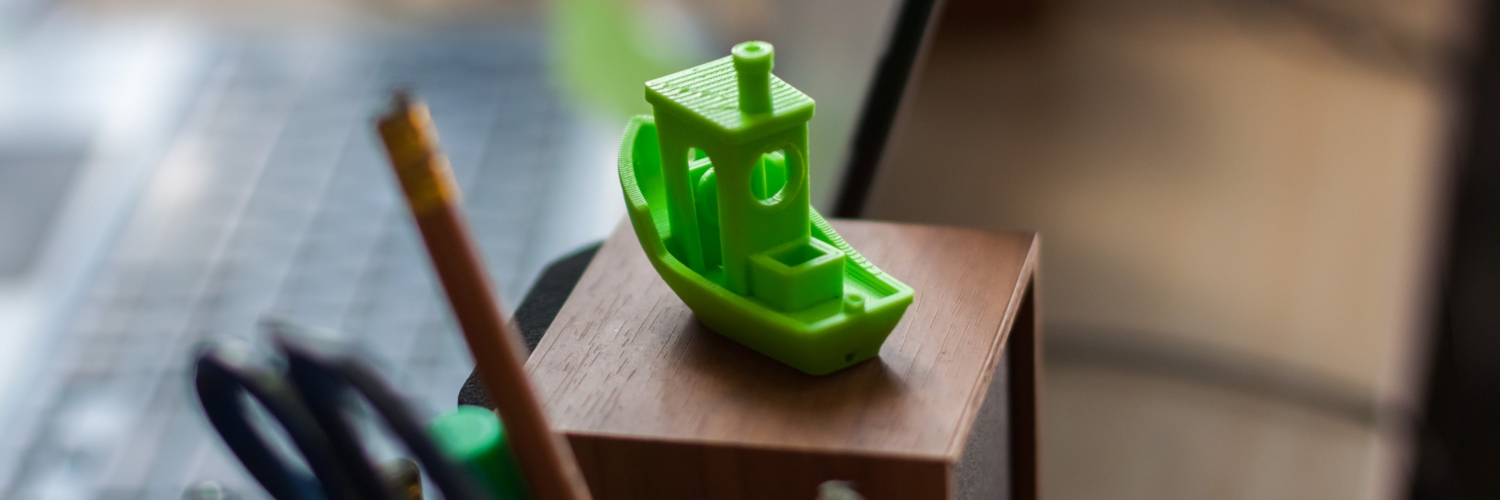3D printing is one of those strange education trends that garners much hype, but which to my mind has yet to unveil any true educational potential. I get that it’s great to see one’s renderings produced as an actual product, that can be held and seen, and I also get that that process imbues the classroom with no small amount of fun, making it more attractive to students than the 2D learning space of textbooks and Powerpoint.
However, the costs of buying and running a 3D printer are still so high that many teachers and administrators are asking themselves, “Is it really worth it?”
I’ve constructed this blog to answer my own skepticism, and hope, by the end, to have convinced myself that 3D printing delivers on real learning outcomes.
The research
In 2013 the UK’s Department of Education funded a research project to investigate the educational and functional value of 3D printers in the classroom, specifically in DT (Design Technology) and STEM subjects. This was a simple matter of funding 21 schools to buy a 3D printer, allowing teachers from DT and STEM departments to design their own lessons, and observing the results.
One point that the study’s introduction makes, which I think is well-made, is that 3D printers are a comparatively accessible and affordable way for K-12 students to gain access to the types of technologies that will, by the time they are in fully-fledged careers, be much more commonplace, giving them a useful technical understanding of the technology at foundation level.
On reading about the various schools’ approaches it struck me that the most significant learning outcomes came from an inter-curricula approach. While requiring significantly more planning and training, the projects that maintained an interdisciplinary focus, yielded better results.
Interdisciplinary 3D projects
- Arden Academy (Solihull): The school’s project used the 3D printer as the curricula itself - analyzing the chemistry of plastic, as well as the the physics behind 3D printers. The class then created 'Pokémon' style predators, based on the Biology curricula and printed these off on the 3D printer.
- Watford Grammar School: A grade 11 group at the school were studying the calculus relating to velocity, height and distance of a projectile, and were using a class-built catapult to do this. The student engineers realized that the device was becoming unreliable, and so they designed and printed off a coupling to keep their catapult stable.
- Cramlington Learning Village: In a voluntary extra-curricular program, students at the school were challenged with designing chairs. The project included mathematics, physics, DT and business science, as they not only needed to produce chairs that were stable, but also chairs that were marketable, sustainable and affordable.
With these examples in mind, I am beginning to understand that the 3D printer is not simply a nifty trick, with which to engage students, but allows for cross-disciplinary projects that in all senses mimic the real work of manufacture and invention.
What about non STEM subjects?
Another question many teachers ask is how can 3D printing enable better learning outcomes in non-STEM subjects. There are also a number of fine working examples of these types of projects:
- Scotch College and PCL Peret, Australia: Film and Narrative. Two single-gender schools teamed up for a unique 3D printing project. 1st grade boys from Scotch College were teamed up with girls from PLC, to form creative teams. The teams designed a character in the Makers Empire 3D software, printed it off, and then together filmed a short story using the character and their iPads.
- Jefferson Middle School: At risk ELL learners. Inspired teacher, Heather Wolpert-Gawron decided to use 3D printing in her English Language Learning class, specifically to counteract the trend of students dropping out due to disengagement. She realized she needed to provide the students with stimulating content to write about. She has initiated a 3D design project aimed at designing assistive devices for children, and has implemented a host of ELL projects alongside it. Students journal about their design journeys, write to the children they are assisting and write reports on the successes and failures of their 3D printing exercises. All with a view to making ELL accessible, interactive and more engaging.
- Wakayama Technical High School, Japan: Perfect artifact replicas: There are hundreds of temples and shrines throughout Japan, most of them with priceless artifacts in them such as golden Buddhas, face masks and other statues. The school has partnered with the Japanese authorities to perfectly replicate many of the artifacts as 3D renderings, then printing them in fabrication labs, and replacing them in the museums to protect the originals from an increasing threat of theft. Students not only learn the intricacies of the design and manufacture of some of these rare items, but also provide a valuable service to their society.
Closing thoughts
I think one of my primary concerns with the notion of 3D printing in the classroom at the outset of this post was that, it seemed to me, a rather expensive way to stimulate student interest. And while almost all of the projects I have named here have indeed done just that, they have also provided a new context for learning, and allowed students to practice not only interdisciplinary skills, but also a fair amount of problem solving and critical thinking.







